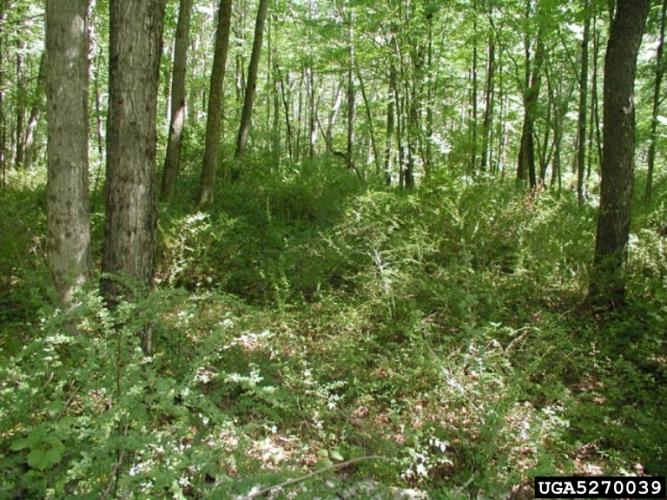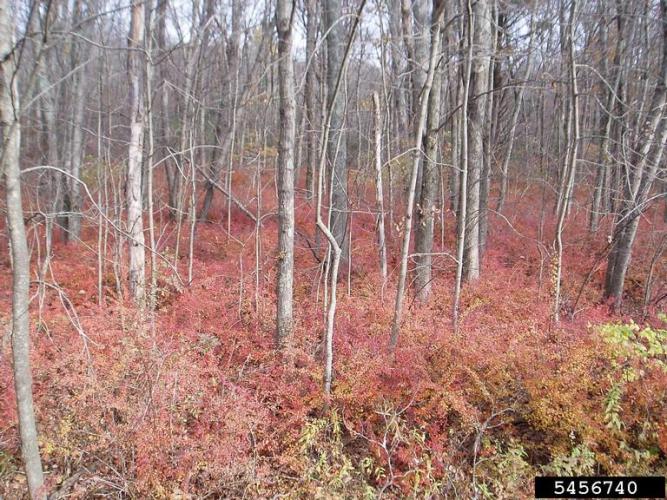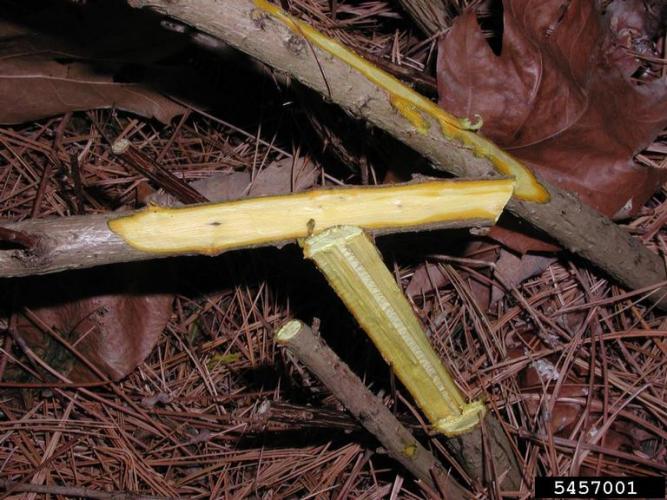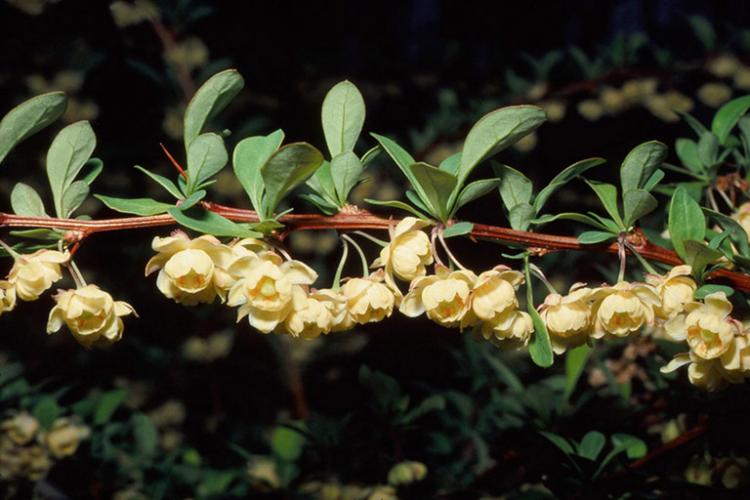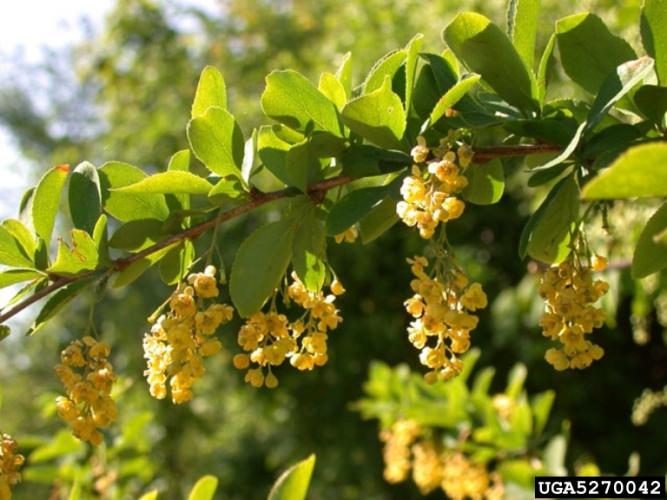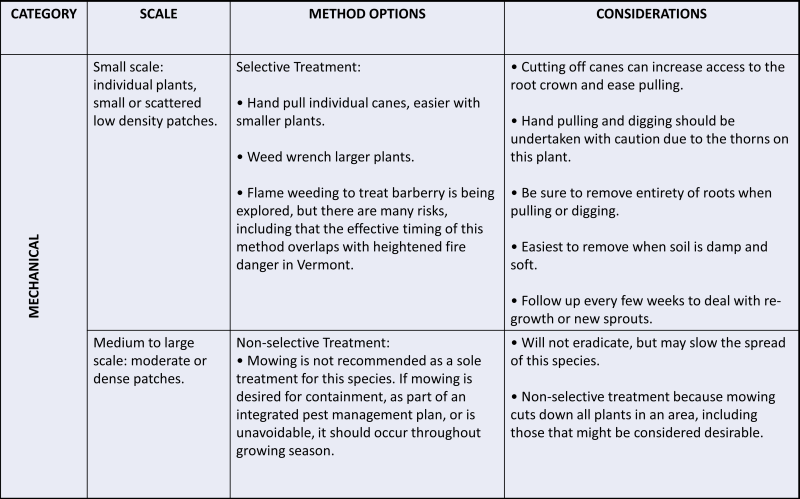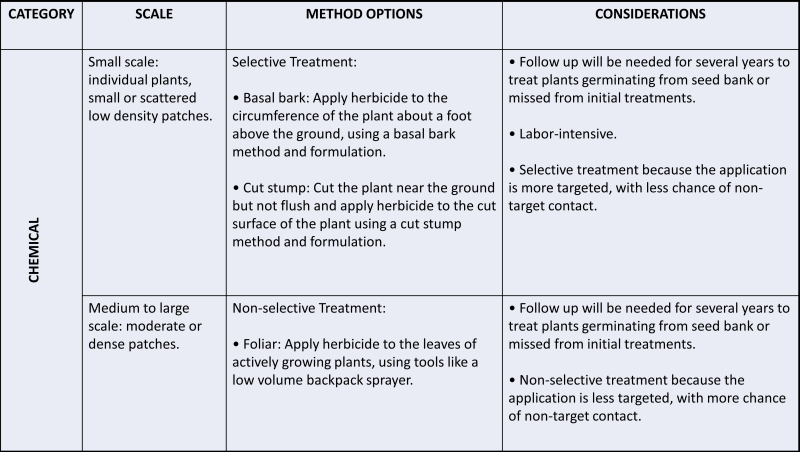Barberry, Japanese
Identification
Appearance
Berberis thunbergii is a small deciduous shrub from 2-8 feet tall. The thin, grooved branches have thin, straight spines. Berberis thunbergii is very shade-tolerant and can form dense stands which shade out and displace native species.
Foliage
The leaves are up to 1 inch long and paddle-shaped.
Flowers
The pale-yellow flowers occur in drooping clusters of 2-5 and develop in mid-spring to early summer.
Fruit
The berries ripen to a bright red color and are 0.25-0.3 inches long.
Check out the downloadable fact sheet above
The University of Connecticut has released an excellent video series on barberry.
Biology
ECOLOGICAL THREAT
Barberry forms dense stands in natural habitats including forests, open woodlands, wetlands and meadows. Once established, it displaces native plants and reduces wildlife habitat and forage, increasing pressure on natives by white-tailed deer. It has been found to alter the pH and biological activity of soil. Barberry is also a human health hazard, not only because it has sharp spines, but also because it acts as a nursery for deer ticks, which can transmit Lyme disease.
Origin
Japanese barberry was introduced into the United States as an ornamental plant in 1875. It was promoted as a substitute for European barberry, the latter which was found to be a host for the black stem grain rust. European barberry was originally planted by settlers for hedgerows, dye and jam-making. Japanese barberry is still widely planted for landscaping and hedges.
HABITAT
Forest, forest edge, floodplains, meadows, fields, disturbed areas
Life Cycle
Reproduction is mainly by seed but it can root sprout and layer. Barberry produces a large number of seeds with high germination rates, estimated at up to 90%. Fruits mature from July to October and persist well into the winter. Fruit production varies with light level, but even under very low light levels (4% full sun) some seeds are produced.
Vermont Distribution
How You Can Help
NATIVE/NON-INVASIVE ALTERNATIVES
Common winterberry (Ilex verticillate)
Native Perennials and Shrubs for Vermont Gardens
Alternatives to Common Invasive Plants and Characteristics of Select Alternatives
Citations
PHOTO CREDITS
Common Barberry, UGA5270042, Leslie J. Mehrhoff, University of Connecticut, CC 3.0
Japanese barberry infestation, 5270039, Leslie J. Mehrhoff, University of Connecticut, CC 3.0
Japanese barberry infestation, 5456740, Leslie J. Mehrhoff, University of Connecticut, CC 3.0
Japanese barberry bark, 5457001, Leslie J. Mehrhoff, University of Connecticut, CC 3.0
INFORMATION CREDIT
Pennsylvania DCNR, Japanese barberry
New Hampshire Department of Agriculture, Japanese barberry
Vermont Chapter of The Nature Conservancy
PennState Extension Resource on Japanese Barberry
US Forest Service Fire Effects Information System Report on Japanese Barberry
Michigan Department of Natural Resources Best Control Practices for Japanese Barberry
Minnesota Department of Agriculture Summary on Japanese Barberry
